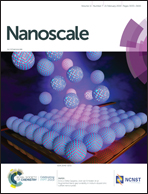Exploring the sodium ion storage mechanism of gallium sulfide (Ga2S3): a combined experimental and theoretical approach†
Abstract
Developing sodium ion battery (SIB) anode materials of a low-cost and high-capacity nature for future large-scale applications still involves challenges. Herein, we have reported gallium sulfide (Ga2S3) as a novel SIB anode material for the first time. Ga2S3 nanorods have been synthesized via the facile hydrothermal preparation of a GaOOH precursor with subsequent H2S annealing. Mixed with graphene upon electrode preparation, this Ga2S3 electrode maintains a reversible specific capacity of 476 mA h g−1 after 100 cycles at a current density of 0.4 A g−1, with a coulombic efficiency of over 99%. Ex situ XRD analysis and theoretical calculations are employed to comprehensively elucidate the detailed sodium ion storage mechanism of Ga2S3, which is composed of initial Na+ intercalation, a subsequent multi-step conversion reaction between S and Na+, and an eventual alloying reaction between Ga and Na+ with the end product of Na7Ga13. Further kinetics analysis has demonstrated that the conversion reaction is the rate-limiting step due to a multi-step reaction with the intermediate phase of GaS. Moreover, the appearance of liquid metal Ga, as confirmed via TEM observations and theoretical calculations, can serve as a self-healing agent that repairs cracks in the electrode. Our findings shed light on the further design of Ga-based materials, and they also can be extended to solid-state-battery systems.



 Please wait while we load your content...
Please wait while we load your content...